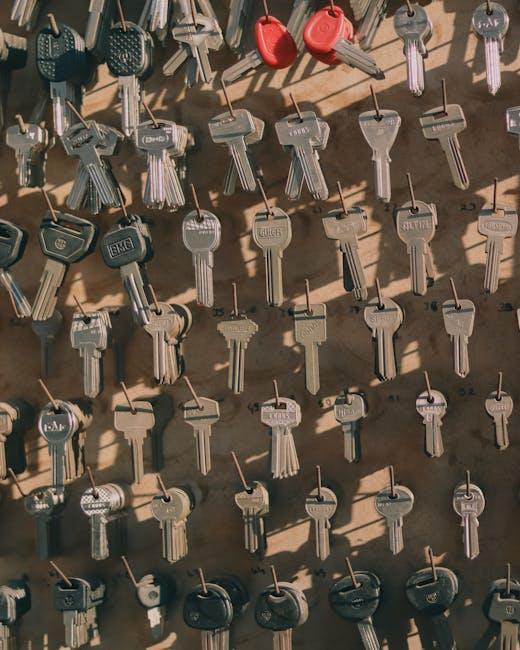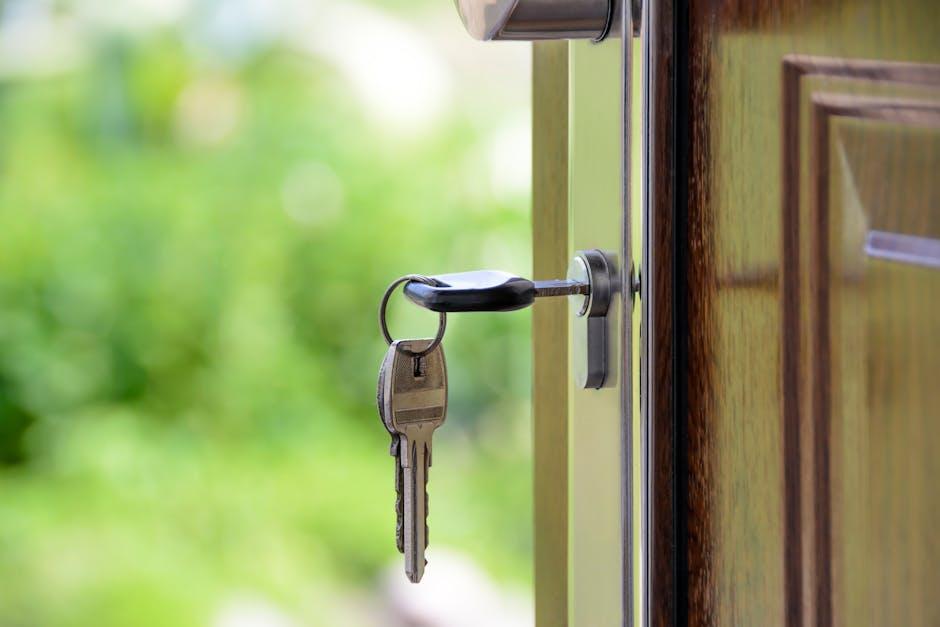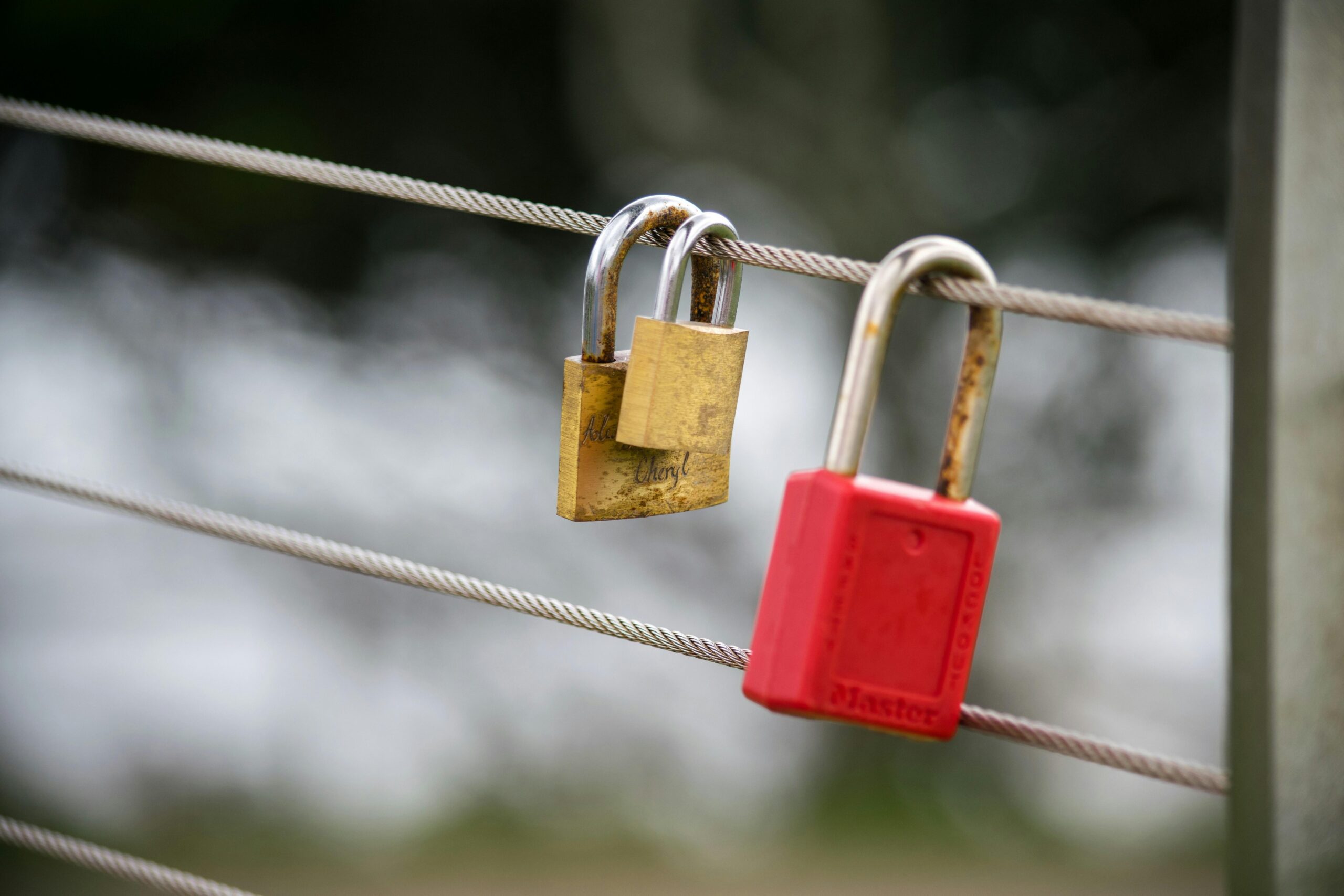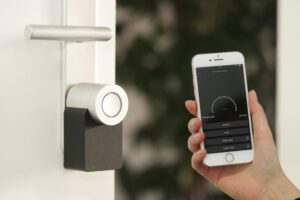In a world where keys unlock not just doors but our sense of safety, the act of duplicating a key might seem as harmless as copying a house key for a trusted friend. Yet, behind this everyday convenience lies a complex web of security implications that are often overlooked. When does the simple turn of a key morph from an act of convenience into a potential gateway for risk? Exploring the fine line between accessibility and vulnerability, this article delves into the scenarios where key duplication transforms from a helpful practice into a critical security concern.
Table of Contents
- Understanding the Basics of Key Duplication and Its Common Uses
- Identifying Security Risks Associated with Unauthorized Key Copies
- Evaluating When Key Duplication Compromises Personal and Business Safety
- Best Practices for Controlling Access and Managing Duplicate Keys
- Recommendations for Choosing Secure Alternatives to Traditional Key Duplication
- Q&A
- To Conclude

Understanding the Basics of Key Duplication and Its Common Uses
At its core, key duplication is a practical service that allows individuals to create copies of their physical keys for convenience and access management. Whether it’s for providing spares to family members or making sure you have a backup in case of loss, duplicated keys serve an essential everyday purpose. Common situations where key duplication proves valuable include access to homes, vehicles, office spaces, and even lockers. This process is typically quick, involving machines that replicate the exact cut of an original key with precision.
However, key duplication becomes a potential security risk when control over who has access to the duplicates is lost or ignored. If copies fall into the wrong hands, unauthorized individuals can gain entry without detection. This issue is particularly critical in environments where sensitive information, valuable property, or personal safety is at stake. Typical warning signs to be cautious about include:
- Unrestricted duplication at non-reputable key cutting shops
- No tracking or registration of issued duplicate keys
- Sharing keys without secure protocols or written consent
| Scenario | Risk Level | Security Tip |
|---|---|---|
| Home Key Duplication | Moderate | Limit copies and track issuance |
| Office Master Keys | High | Use restricted keys and logs |
| Vehicle Keys | High | Enable electronic immobilizer systems |

Identifying Security Risks Associated with Unauthorized Key Copies
Unauthorized key duplication significantly elevates security risks by creating multiple, untracked access points into secure areas. When keys fall into the wrong hands, whether through inadvertent copying or intentional duplication, the integrity of security protocols is compromised. Environments such as office buildings, restricted labs, and residential complexes are especially vulnerable. Key copies made without proper authorization often bypass identification systems, making it difficult for property managers to regulate who enters sensitive spaces.
Recognizing the risks involves understanding common vulnerabilities associated with key duplication:
- Invisible Tracking: Copies made without permission leave no digital footprint.
- Loss of Control: Property owners can’t control or revoke unauthorized copies.
- Increased Theft Risk: More potential entry points raise the chance of burglary or vandalism.
| Scenario | Security Concern | Mitigation |
|---|---|---|
| Keys given to multiple tenants | Untracked sharing and copying | Implement master key systems with restricted duplication |
| Lost or stolen keys | Unauthorized access without identification | Rekey locks and cancel old codes |
| Third-party duplication shops | Lack of verification for key legitimacy | Use patented keys with legal copy restrictions |

Evaluating When Key Duplication Compromises Personal and Business Safety
The act of duplicating keys might seem harmless, but it can open up a Pandora’s box of security vulnerabilities. When keys fall into the wrong hands, whether through unauthorized copying or careless sharing, the safety of both personal and business environments can be severely compromised. Simple mistakes like lending a key to a temporary visitor or having a duplicate made without thorough vetting can lead to intrusions, theft, or even data breaches. It’s important to recognize that not all key duplication situations balance convenience with security equally – some risks demand a cautious approach that prioritizes controlled access over easy duplications.
To effectively evaluate the risks involved, consider these critical factors:
- Access Level Sensitivity: Are the keys granting entry to high-security areas containing valuable assets or sensitive information?
- Duplication Authorization: Is there a formal process ensuring only authorized personnel can make copies?
- Tracking and Accountability: Can you monitor who has a key and when duplicates were created or distributed?
- Physical Key Control: Do you have measures in place to prevent lost or stolen duplicates?
| Key Type | Risk Level | Recommended Action |
|---|---|---|
| Standard House Key | Moderate | Limit copies to trusted individuals |
| Master Key | High | Strict control & restricted duplication |
| Office Safe Key | Critical | Track usage & use secure lock alternatives |

Best Practices for Controlling Access and Managing Duplicate Keys
Effective control over who holds duplicate keys is crucial in safeguarding your property against unauthorized access. Establish clear protocols for issuing keys, such as maintaining a logbook or digital registry that tracks every duplication and its recipient. Always verify the identity and trustworthiness of individuals before providing a copy, and consider limiting the number of duplicates to only essential personnel. By implementing these measures, you minimize the risk of keys falling into the wrong hands, reducing the chances of burglary or unauthorized entry.
To further enhance security, it’s beneficial to adopt a periodic review mechanism. This could include:
- Regular audits of key holders and duplication logs
- Deactivating or recalling keys from former employees or tenants
- Upgrading locks when duplication control becomes uncertain
Here’s a simple overview of key management practices:
| Practice | Benefit | Action Frequency |
|---|---|---|
| Key Issuance Log | Accountability & tracking | Every duplication |
| Identity Verification | Prevents misuse | Before issuing keys |
| Access Review | Limits unauthorized access | Quarterly or bi-annually |

Recommendations for Choosing Secure Alternatives to Traditional Key Duplication
Opting for modern security measures can significantly reduce the risks associated with traditional key duplication. Consider investing in high-security locks that utilize patented key designs, which restrict unauthorized copying. These systems often require proof of ownership and specialized equipment for duplication, providing an extra layer of control over who can replicate your keys. Another smart alternative is to explore smart lock technology, where physical keys are replaced with encrypted digital access codes or biometric authentication, eliminating the vulnerabilities tied to physical keys entirely.
When evaluating options, keep in mind the balance between security and convenience. Here’s a simple comparison of popular secure alternatives to classical key duplication:
| Alternative | Security Level | Duplication Control | Ease of Use |
|---|---|---|---|
| Patented Keys | High | Restricted | Moderate |
| Smart Locks | Very High | Digital Access Only | High |
| Key Fobs | High | Programmable | High |
| Traditional Keys | Low | Unrestricted | High |
Always verify the credentials and security certifications of any alternative system, and consider professional installation to maximize protection. Secure solutions not only help in preventing unauthorized duplicates but also provide audit trails and control measures that traditional keys simply cannot offer.
Q&A
Q: What exactly is key duplication?
A: Key duplication is the process of making a copy of an existing key, typically so that multiple people can access the same lock. This is often done at hardware stores or locksmiths using key-cutting machines.
Q: When does key duplication become a security risk?
A: It becomes risky when copies are made without the owner’s knowledge or consent, especially if the key gives access to sensitive or private areas. Unauthorized duplication can lead to theft, invasion of privacy, or other security breaches.
Q: Are all keys equally vulnerable to unauthorized duplication?
A: No. Basic keys, like those for standard door locks, are easier to copy. Keys with patented designs, restricted blanks, or electronic elements are much harder to duplicate without authorization, providing enhanced security.
Q: Can I prevent my key from being duplicated?
A: Yes. You can request keys that come with a duplication restriction, such as patented keys that require proof of ownership or special authorization to copy. Additionally, some security systems move beyond physical keys, using electronic or biometric locks.
Q: Is it safe to give copies of my key to neighbors or house sitters?
A: It depends on trust and necessity. Sharing keys with trusted individuals can be practical, but you should be aware of potential risks. If you’re concerned about unauthorized duplication, consider using locks with restricted key systems or smart locks that allow you to control access digitally.
Q: What should I do if I suspect someone has duplicated my key without permission?
A: Change your locks promptly and consider upgrading to a more secure locking system. It’s also wise to consult a locksmith to assess your home’s security and possibly install keys with restricted duplication.
Q: How does key duplication compare to modern digital security options?
A: While key duplication involves physical copies that can be lost or stolen, digital locks offer access control via codes, smartphones, or biometrics. These systems often allow you to monitor entry logs and revoke access remotely, providing a different layer of security.
Q: What considerations should be made for commercial or institutional settings?
A: In businesses, unauthorized key duplication can lead to severe security breaches. Implementing master key systems with restricted keys, audit trails, and regular access reviews are essential strategies to mitigate risks.
Q: Can key duplication affect insurance coverage?
A: Yes. Some insurance policies may require you to use secure locking systems or may not cover losses if negligence regarding key security is proven. Always check policy details and follow recommended security practices.
Q: In summary, when should I worry about key duplication as a security risk?
A: Be cautious whenever keys are lost, shared, or duplicated without your awareness-especially if they control access to valuables or sensitive areas. Using restricted keys and modern locking technologies can help minimize risks and give you peace of mind.
To Conclude
In the end, key duplication sits at the crossroads of convenience and caution. While making a spare key can provide peace of mind and practical ease, it also carries hidden risks that shouldn’t be overlooked. Understanding when and how key duplication morphs from a harmless act into a potential security threat empowers you to make informed decisions about your personal safety. After all, in the world of locks and keys, a duplicated copy can either be a trusted backup or an uninvited invitation-it’s all in how and when you choose to use it.





